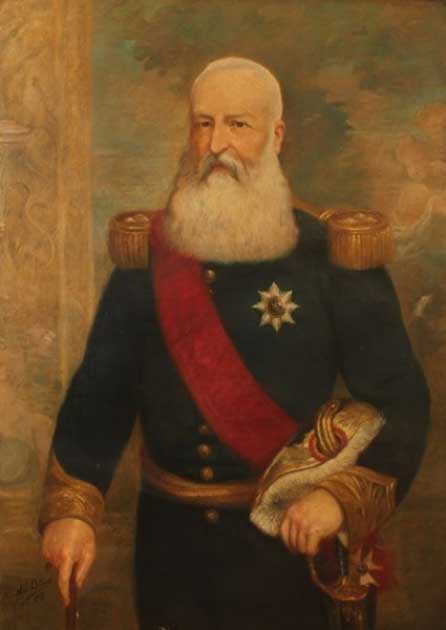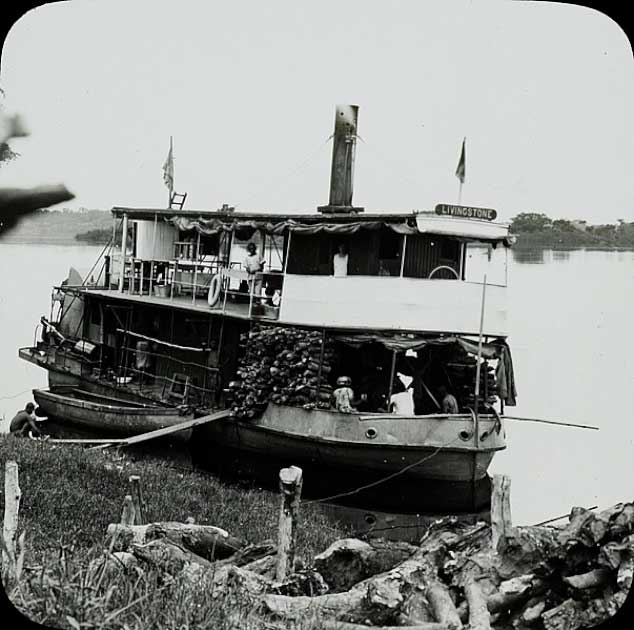Even today the true toll of European colonialism is still being covered. While European colonialists may have tried to paint themselves as benevolent rulers, bringing civilization to the untamed wilds, more often than not, the opposite was true.
Perhaps one of the worst acts carried out by Europeans was the genocide carried out against the people of the Congo by King Leopold II. For decades what really happened there was swept under the rug. But no more. Here we tell the horrific tale of King Leopold and the biggest cover-up in European history.
Who Was King Leopold?
King Leopold II was the second king of the Belgians and reigned from 1865 until 1909. He was born in Brussels on the 9th of April 1885, the second son of Leopold I and Louise of Orleans. As his father’s only surviving heir (his older brother Louis Phillipe had died the year before Leopold was born) Leopold came to power when his father died in 1865.
Leopold admitted early on that his only goal was to make Belgium great. He focused on improving Belgium’s military, founding colonies, and building new urban projects in Belgium.
Today Belgians often remember him as the “builder king” due to the fact he commissioned a large number of buildings, urban projects, and public works. How did he pay for all this expansion? With profits generated from his exploitation of the Congo Free State. Something that he tried his best to cover up.
The Congo Free State
King Leopold strongly believed that overseas colonies were the key to cementing his country’s greatness. As such he worked tirelessly to obtain as much colonial territory as he could. He wanted Belgium to be the crown jewel in a vast empire that would rival the likes of the British Empire.

The problem was other countries weren’t so keen. After various failed attempts to acquire countries in Africa and Asia, Leopold changed tack. If he couldn’t create an Empire as King of Belgium, he would do it as a private citizen.
- The Haitian Revolution: How Did an Enslaved Island Defeat Two Empires?
- Charles VI: A King made of Glass?
In 1876 he founded a private holding company that claimed to be an “international scientific and philanthropic association” called the International African Society. His new company claimed to want to explore the Congo and “civilize its people” (a fairly racist goal in and of itself but indicative of the period). In 1878 he sent the explorer Henry Stanley to explore and establish a colony in the Congo.
After a lot of diplomatic negotiations and maneuvering (or rather, lying), it was decided at the Berlin Conference of 1884-1885 that Leopold would be recognized as the sovereign of the Congo. This was under the condition that he focus his efforts on improving the lives of the area’s native people.
On 5th February 1885 the Congo Free State, which was 76 times larger than Belgium, was established. It came under Leopold’s personal rules (private ownership) along with a private army, The Force Publique.
There was nothing free about the Congo Free State and Leopold immediately dropped any pretense of following the conditions laid out by the other nations at the meeting in Belgium. Leopold soon began massing a huge fortune by exploiting the Congo.
At first, he focused on the exportation of ivory, which while profitable, came nowhere near to meeting the revenues Leopold expected. Luckily for Leopold shortly after his state was established global demand for rubber exploded.
The collection of sap from rubber plants is a labor-intensive process and so, the natives were forced to work in rubber plant plantations. Abuse was rife. Beatings, mass killings, and the use of torture were all used to ensure production quotas were met.
Unsurprisingly Leopold and his people didn’t keep track of how many natives were killed. The death toll has been estimated to be anywhere from 1-15 million. The closest we can get to an accurate figure is by using the assessment of the 1919 Belgian government commission.
This estimated that roughly half the population of the Congo Free State died during its existence. Since a census in 1924 counted around 10 million people, this would put the population at around 20 million before the genocide. In other words, it is likely at least 10 million people died.
The Cover Up
By 1902 thanks to works such as Joseph Conrad’s Heart of Darkness international criticism of Leopold’s rule over the Congo had become widespread. News of mass killings and human rights abuses led to the British Crown sending their consul Roger Casement to investigate the Congo Free State.
- King John: England’s Most Hated King?
- How the Darien Scheme Changed the History of Scotland’s Independence
He produced the Casement Report which detailed the countless cases of abuse carried out under Leopold’s direction. The Report resulted in the first mass human rights movement, the Congo Reform Association. Various famous authors such as Mark Twain and Arthur Conan Doyle joined the movement, writing stinging critiques such as King Leopold’s Soliloquy and The Crime of the Congo.
Belgium was quickly finding out that there was such thing as bad publicity, after all. As international opposition skyrocketed, so did criticism at home. The Catholic party, Progressive Liberals, and Labour Party all forced the Belgian Parliament to compel Leopold to cede the Congo Free State.
The move went ahead in 1908. It was hugely expensive. The move cost Belgium 215.5 million francs. Most of the money went to paying off the debt of the Congo Free State and paying its bondholders. Shockingly the deal included paying Leopold 50 million Francs.

The Congo Free State was transformed into a Belgian colony known as the Belgian Congo. It was under the control of parliament. To ensure no more bad press could come his way Leopold had the entire archive of the Congo Free State burned and hid all traces of his wrongdoing as ruler of the state.
Leopold himself died on 17 December 1909. As his funeral procession passed through the capital it was met by boos and jeers. It was an expression of his own country’s disgust at what he had done in the Congo in their name.
As is so often the case the outrage soon died down. In death, he went from being the villain of the Congo to the builder king. Statues were erected celebrating his various accomplishments in Belgium (which had been paid for in blood).
Over the last 20 twenty years, the debate over Leopold’s actions has periodically cropped up, with various historians attempting to highlight Leopold’s atrocities. In 2020, after a Black Lives Matter protest in Brussels MPs agreed to set up a parliamentary commission to “examine Belgium’s colonial past”. Hopefully this time the past will stay unburied.
Top Image: Cartoon by Francis Carruthers Gould depicting Leopold II guarding the gateway to the Congo. Source: Francis Carruthers Gould / Public Domain.